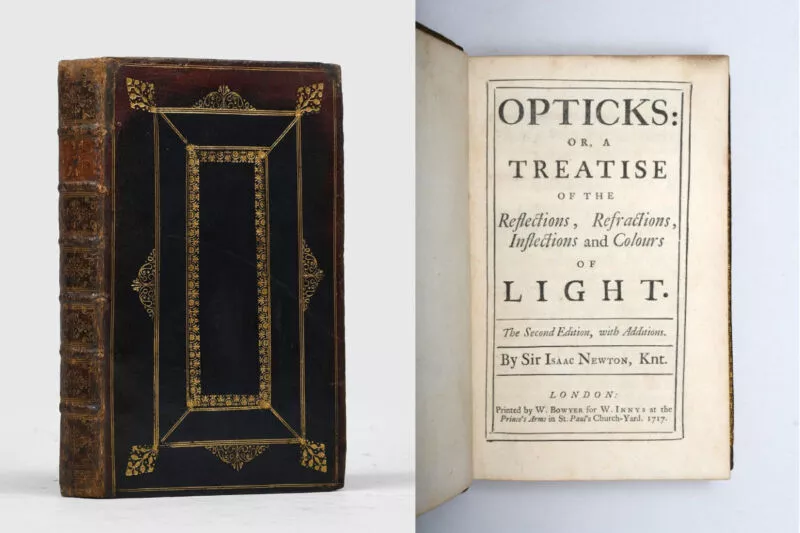After going missing for a century, a brand-new personal copy of Isaac Newton's "Opticks" is going up for auction. One of the three major works on optics produced during the Scientific Revolution is Newton's illuminating treatise, which examines the fundamental nature of light.
During the COVID-19 pandemic, book collector David DiLaura found the long-lost copy while sorting his collection. The book will be sold at the Rare Books San Francisco Fair, which takes place from February 3 to February 5, and it is anticipated to be purchased for a staggering $460,000.
DiLaura, a professor emeritus at the University of Colorado, discovered a copy of Newton's Opticks that he had purchased 20 years earlier while organizing his collection. The book's bookplate indicated that James Musgrave was the previous owner of a second edition published in 1717. However, a closer look revealed a second bookplate hidden by the first, revealing Charles Huggins as the previous owner.
Lost Copy With New Discoveries
DiLaura discovered through research on the two names that after Newton died in 1727 without leaving a will, a person by the name of John Huggins purchased his books and other possessions and gave them to his son Charles, an Oxfordshire rector. Before many of the items were sold in 1920, they were passed down through the generations to James Musgrave, Charles' successor as rector. Until DiLaura found the book, it was thought to be lost.
The physicist's decades-long research into the nature of light culminated in the publication of Newton's Opticks in 1704. Britannica mentioned that Newton wrote Opticks in common English, making it more accessible to a wider audience than his more well-known "Principia Mathematica," which outlined the three laws of motion and was written in Latin
One of the many discoveries detailed in its pages was Newton's explanation of how glass prisms could both separate white light into its component colors and reassemble it, weighed in on the debate regarding whether light was a wave or a particle (he thought it was a particle, which he called a corpuscle); and talked about how the way a material selectively absorbs, transmits, or reflects the various colors in white light affects how we perceive color.

Isaac Newton's pristine personal copy of Opticks.
ALSO READ: Newton's Bizzare Recipe That Uses Toad Vomit For Plague Cure Now Up for Auction Starting at $65,000
Newton's Book in Auctions
Not only were Newton's experiments laborious, but they were also painful because he was fascinated with light and how we perceive it. When he was a young man, he poked at the retina beneath his eyeball with a long, blunt sewing needle (a bodkin). The needle was inserted between the eyeball and the bone, as stated by Live Science in a report.
Newton confirmed that the eye acted similarly to a pinhole camera, inverting images onto the retina wall that the brain would later revert to construct our sense of vision by analyzing the sparkling spots in his vision that the gruesome probing produced and contrasting his notes to those taken from the dissection of a rabbit's eye. DiLaura's copy of Opticks is considered one of two personal editions that Newton originally owned.
It is the perfect copy of his working copy, which is in the Huntington Library's collection and is full of annotations, edits, and marginalia. First editions and personal copies of Newton's books are extremely uncommon and likely to fetch high prices. The most expensive scientific book ever sold at auction was a Latin first edition of Newton's "Principia Mathematica'' in 2016 at Christie's in New York for $3.7 million to an unidentified buyer.
RELATED ARTICLE: Isaac Newton Facts, Contributions, and Secret Mischievous Life: How He Spent His Childhood and Survived the Great Plague
Check out more news and information on Isaac Newton in Science Times.










!['Cosmic Glitch' in Einstein's Theory of General Relativity Could Be Explained in This New Scientific Tweak [Study]](https://1721181113.rsc.cdn77.org/data/thumbs/full/53435/258/146/50/40/cosmic-glitch-in-einsteins-theory-of-general-relativity-could-be-explained-in-this-new-scientific-tweak-study.jpeg)



